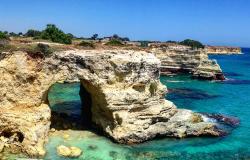 (ANSA) - With a family of five feared dead after torrential rains demolished a bridge in southern Italy, public officials sounded the alarm on Monday over poor land management policies and illegal building activities. Civil Protection Department chief Guido Bertolaso said in a press interview that "once again, we are crying over deaths in an area where it was absurd to build."
(ANSA) - With a family of five feared dead after torrential rains demolished a bridge in southern Italy, public officials sounded the alarm on Monday over poor land management policies and illegal building activities. Civil Protection Department chief Guido Bertolaso said in a press interview that "once again, we are crying over deaths in an area where it was absurd to build."
"The blame lies with those who have ravaged the land. We need a plan to immediately make safe the zones which have been disfigured by illegal constructions," he told Turin daily La Stampa.
Disaster struck on Saturday night in the town of Cassano delle Murge, not far from the Puglia port of Bari, when a bridge over a normally dry river bed was demolished by a wall of water following a torrential downpour. The bridge gave way as two cars were driving across it. The dead bodies of three of the victims, a 51-year-old father, his 19-year-old daughter and his 28-year-old son, were recovered by rescue workers on Sunday.
The search continued on Monday for the bodies of two other feared victims, the man's 49-year-old wife and his second son aged 23.
Bertolaso said that "the bridge was planned badly and built badly."
"For the past five years I have been travelling around Italy denouncing the cementification of rivers. This time the risk became reality and caused these deaths. It's a miracle that the toll was not heavier," he said.
"If you put up buildings and cultivate land on what was formerly the bed of a river, then you can't call it a natural disaster if a tragedy occurs," Bertolaso said.
He also added that the near-disastrous derailment of a high-speed train in the same storm-battered region was caused by similar incompetence and soil mismanagement. More than 20 people suffered minor injuries when the Eurostar train derailed near Bari on Sunday morning.
The last carriage of the train, which was travelling from Taranto to Milan, came off the rails after heavy rains swept away the earth and ballasts holding up the tracks. Photos of the incident showed how close to disaster the train and its 70 passengers had come, with part of the last carriage perched on tracks that were literally left hovering in the air.
"It's a sheer miracle that we're still alive," one of the passengers told reporters. Italian dailies noted that the same piece of track had had to be repaired a year ago after a similar landslide. Puglia's regional councillor for the environment, Michele Losappio, said that "this umpteenth disaster in Puglia underscores the absolute need to change our models of development."
"We cannot escape paying for this mismanagement of the land... With increasing frequency, nature rebels and presents us with the bill," the councillor said. Puglia regional government chief Nichi Vendola said that he had asked Bertolaso to help the region draw up a map of areas at potential risk.
The region on the heel of Italy has asked for a state of emergency to be declared after being hit by storms over the weekend which caused widespread damage, flooding and mudslides. The storms claimed another victim near Bari when a torrent of mud and rain smashed into a car being driven by a 24-year-old man and swept it into the sea.
Experts have long warned that land mismanagement, deforestation, unregulated development and inadequate drainage systems are largely to blame for the deadly floods and landslides that regularly strike Italy. In October 2000, more than 25 people died and 43,000 had to be evacuated when floods hit first the northwest and then the northeast of Italy.
Experts attributed the calamity mainly to "the actions of man," noting that farmers had flattened and cultivated land around northern rivers, preventing the flood water from draining off, while homes and buildings had been erected on river banks and beds. Similar unregulated activities were blamed for the deaths of more than 140 people in a 1998 mudslide that buried the town of Sarno to the south of Naples.
One of the worst disasters occurred in 1963 near Belluno in northeast Italy when the Vajont Dam - one of the highest in the world and used to generate electricity - flooded after heavy rains. Landslides into the Vajont reservoir caused the water to
spill over the dam and more than 2,500 people drowned when the resulting torrent swept away the village of Longarone and
several neighbouring hamlets.






